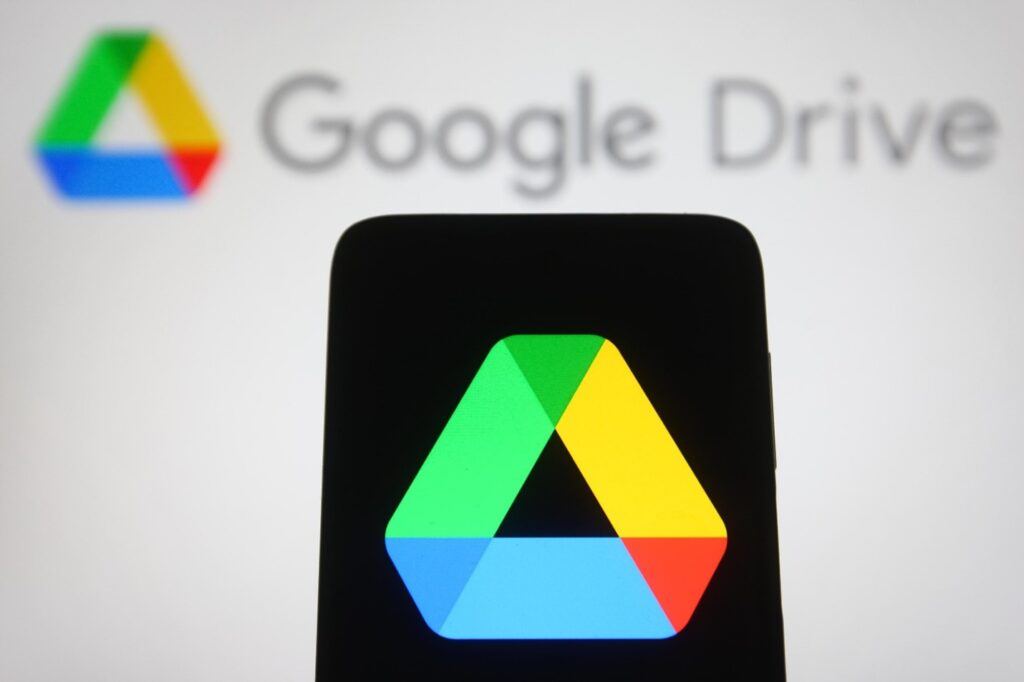The 3 Best File-Sharing Sites

Table of Contents
Introduction

In this post, we will briefly delve into the history of file-sharing services and discuss the best of the best. We’ll also cover some of the other more interesting aspects of file sharing.
Table of Contents
Before we get to that, we have to address a question that comes up frequently:
“Why do people share? Is it because they like sharing? Or is it because they like being able to share?”
The answer is a bit more complicated than that. The reason people share files is that for a long time, users were only allowed to share files on their own computers (it took until fairly recently for users to be allowed to share big files in public places too). But once people started sharing files with each other from their phones, it became relatively easy (and cheap) for them to do so and because these were two-way transfers, it was possible for them to decide who could see what.
I think you can see how this makes sense: if you want your friend to see your photos in your camera roll, you need them on your phone; if you want someone else’s photos in your gallery, they need them on yours; if you want photos from another source in another folder on your computer, you need access to their pictures there.
The same goes with pictures: if someone wants a photo off of your camera roll but doesn’t have access itself, they need access via their phone; if someone shares a photo off of their phone without permission (or when it isn’t available), they aren’t doing anyone any favors by doing so. Conversely: if someone wants access to someone else’s photos and doesn’t have them themselves (or can’t find them), then they are doing something wrong.
So why are people sharing? There are a few very good arguments:
- They want others to be able to view what they are taking pictures of or showing others
- They want others to be able to copy and paste things onto their own devices or across other networks (this especially goes for websites operated by third parties)
- They hope that others will lend things/services/products that they don’t have themselves (such as books)
If any one of those really resonates with you as an explanation then I think you should be better off saying “That sounds reasonable enough! I understand! But why would I give my stuff away?
The 3 best file-sharing sites
There are a few different ways to solve the problem of file sharing. The first way is to use a hosted solution that provides a secure environment, and then users can upload anything they want. This works fine for those people who have computers that can handle the demands of an Internet connection, but it doesn’t help the poor people who don’t own computers that can handle an Internet connection.
The second way is to create a personal cloud. This is similar to what Dropbox does: you store your files in your own personal cloud, and access them any time you want with just one click or click-and-drag action. The catch here is that it requires you to be online all the time — which could become problematic if you have a family member or friend who hangs out online all day long (or even just works online), not to mention when you go on vacation or travel.
The third way is through file hosting services like Box or Google Drive — these offer both storage and access for free, However, these services generally require users to pay for upgrades and extra features that let users do things like emailing their files from the server instead of downloading them from their browser, take photos during uploads, etc.
And finally, there is a web-based file-sharing service called Dropbox which lets users uploads any file they want into their Dropbox account and then lets them share it with others through email or social networks (which has strong competition from other providers).
Google Drive

File sharing services have been around for years, with the earliest example being a site called Usenet.com and later, BitTorrent (which was bought by one of Japan’s biggest companies). How much did you know about file-sharing?
Ah, yes that time when we used to have to go digging through your hard drive looking for music or pictures: that was file sharing. Because modern file-sharing services are so easy to use and so ubiquitous, it is often easier to refer to them as “file-sharing platforms” (FSPs), since they are primarily designed around the storage of files; but in reality, these services work more like an app store (i.e., you can download apps from them), since most are designed more like a software platform than a file-hosting service.
These days, there are many different options for users on FSPs, ranging from simple one-click downloaders like eFileCash to complex features that allow users to create their own “workflows” based on their specific tasks or preferences.
They all have their pros & cons and lots of new startups have launched in recent months. We wanted to do a little bit of research and clobber some of the big guns with our product selection criteria:
The top 3 here are our preferred choices for the best FSPs overall. What do we mean by “best?” Well, first of all, we have included a “quality” metric: if you can easily get started with your FSP within minutes, then it is probably going to be up there. We also took into account both free vs premium versions; those who didn’t spend money but still want the best experience should probably consider going premium; because then they will benefit from superior features and better support.
Finally, we took into account whether or not they were available in multiple languages (and if so which ones). The top 3 here are our preferred choices for the best FSPs overall. What do we mean by “best?” Well, first of all, we have included a “quality” metric: if you can easily get started with your FSP within minutes, then it is probably going to be up there. We also took into account both free vs premium versions; those who didn’t spend money but still want the best experience should probably consider going premium; because then they will benefit from superior features and better.
Dropbox

Dropbox is a distributed file storage service. It lets you share files with a limited degree of redundancy and security. For example, when you upload a video, the file will only be stored locally on your computer. This allows you to avoid the risk and cost of storing files on an external server.
Dropbox doesn’t store your data — it just stores it where it is accessed most often, and can be accessed remotely if needed. Dropbox also allows you to back up your data in the cloud so that if something happens to your computer or device, your data will be safe — even if Dropbox is down or unavailable.
Dropbox makes it easy to share files by making it simple to upload photos, music, documents and media files; however, Dropbox doesn’t let you view these files online or save them as an archive for future use.
OneDrive

I’ve always wondered how people in the middle of a project would go about finding the perfect file-sharing service. For example, the group I work with uses one dedicated server, but at least three different ones depending on the feature they need. In most cases, we don’t want to use anything but one or two hosting services because they limit our flexibility and make it difficult to move around between projects.
But what if you want a couple of services? Do you want them all? Or do you just want to focus on a few? The best way to find out is to try them out in person, and that means finding one that suits your needs and wants.
Here are my top three file-sharing services:
- Google Drive: this was my first choice for years until I realized that no matter how good it was or how many features it had — you have to be online at all times. But I still like it for occasional backup purposes and being able to share files with people who can’t spare their own hard drive space (including family).
- Box: this is getting quite close to my heart after using Google Drive for over 10 years now (I’m currently using both). If you don’t mind having your data stored on a third-party server then this is a very good option.
It has the benefit of being completely anonymous so there is absolutely no risk of having your data stolen by hackers or anyone else — though there are human audit checks so at least someone can be sure that no one should be able to crack through your password protection. It also provides cloud storage of photos, music, etc., which can be shared almost instantly as well as easily accessed by Firefox and Chrome browser apps (I also use Box for myself). - Dropbox: This one is not quite as good as Google Drive or Box because it isn’t really limited in any way — although access from different computers may be limited depending on what kind of security software you have installed (which may vary from version to version). Dropbox has some obvious shortcomings though:
- a) It requires a complex setup with each user account having its own passwords (and firewall rules), which keeps me from using too many computers at any given time;
- b) It doesn’t have good file sharing. You have no control over who can access which files — only when they are shared with you.
What to look for in a file-sharing site
You could say that file-sharing sites are the “poor man’s ecommerce”. The “rich man’s ecommerce” is Amazon. File-sharing sites can be just as effective as shopping portals, in that they let people share files for free. But more importantly, they allow people to download files from other users and make them available for others to download.
The three most popular file-sharing sites (and also the most visited by their users) are:
- • FreeFileShare (afreefilehost)
- • Puuclip (puuclipio)
- • Torrentz2 (torrentz2)
What these three sites have in common is that they offer a simple interface — a drop-down menu with some predefined options — and let you pick what you want to do with it. In other words, file sharing is straightforward and you don’t have to think about it much at all. Their price is right too – well below many larger competitors. Of course, there are plenty of other ways to get your photos on social media but there are no better alternatives than using these three services, so I hope this article helps you choose between them!
Conclusion
Compared to the social media age, file-sharing services have been around for a long time. To paraphrase St. Augustine: When we think about file sharing, we typically think about things like FTP and BitTorrent, but in many ways, what we have with file sharing is closer to a classical black-box problem in information science:
A network is any collection of networks (or sets of interconnections) that allows members to communicate with each other without having direct knowledge of the source or destination of messages or files received or sent. This can be accomplished by using a communication protocol (e.g., TCP/IP). A networked system is one that allows members to interact with each other without having direct knowledge of the source or destination of messages or files received or sent.
A network service is any network service that provides a set of services (e.g., routing, authentication, encryption) and that allows members to interact with it without having direct knowledge of the source or destination of messages or files received or sent. The term “file sharing” could apply to many different kinds
of file-sharing service; however, “file-sharing” tends to be used in reference primarily to peer-to-peer file sharing (i.e., when people use their computers as a kind of distributed memory), and there are also some specific cases where it refers specifically to mass storage solutions:
- File Sync: this refers to an implementation where every participant receives an identical copy of all files on behalf of another participant
- File Sharer: another term used for peer-to-peer file sharing systems
- Collaborative Storage: this refers more specifically to solutions involving group storage solutions such as cloud storage services
The three most popular free software applications for exchanging music and videos across platforms are iTunes (iTunes Store), Google’s YouTube Red website and Apple’s iBooks Store for ebooks; these are commonly referred to as “three Bs”: BitTorrent, BeOS, and Bookworm. The most well-known among these is Bit Torrent. There are also several other more niche torrent clients including Qobit, Qutebrowser, YTS. The first generation Bittorrent clients were designed by programmers who were frustrated with the limitations imposed on them by existing protocols such as RARBG which only supported a handful of popular formats like MP3 but did not support popular formats like MP2, Ogg Vorbis etc.